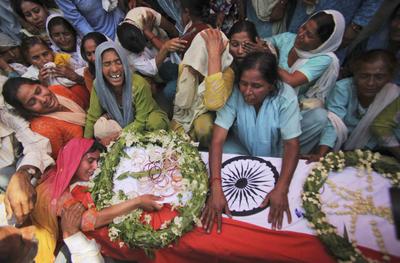They have done so despite a continuous evolution of their understanding of the Indian situation, fighting capabilities and financial resources. The Maoists reject the parliamentary system of government and want to bring about fundamental change in the Indian state. They have adopted a strategy of protracted armed struggle to seize political power by firstly transforming rural areas into guerrilla zones and then into liberated zones.
The Naxal movement has come a long way, and what was once a rebellion is now a threat to the country’s internal security. At least five Indian states (Chhattisgarh, West Bengal, Jharkhand, Orissa and Bihar) are predominantly Maoist and four others (Maharashtra, Uttar Pradesh, Madhya Pradesh and Andhra Pradesh) remain critically Maoist affected. The Maoist movement is slowly but steadily gaining momentum in states like Uttarakhand, Punjab, Haryana, Himachal Pradesh, Karnataka, Kerala and Tamilnadu. Violence has been widespread. Left wing extremism in India is increasingly characterised by its growing militarisation. There were as many as 1,003 casualties from 2,212 Maoist-related incidents in 2010 according to the Indian government. Maoists are now showing a greater tendency to engage security forces in prolonged encounters, suggesting a steady and reliable source of munitions.
The contemporary Maoist movement has successfully implemented many tactical shifts. First, they have utilised the nation’s increased rate of urbanisation. The movement has sleeper cells in most Indian cities and its activities in urban centres have escalated. Of course Maoists today are not in a position to capture Delhi, but having a support base in the urban centres will certainly take the conflict to a new level.
Second, the Maoists have reached out to Islamist militant organisations as well as other militant organisations from Northeast India. This includes groups such as the Pakistani Islamic extremists Lashkar-e-Taiba (LeT) and the Indian separatist group the United Liberation Front of Asom (ULFA).
The Maoists now have successfully expanded their tactics to include mobile warfare. They are also no longer media shy and now engage with media outlets to promote their own interests.
While, over the years, the Maoist intellectual support base was diminishing, the Maoist movement has managed to reverse this trend, not only among academics and activists but also among the student community and workers in unorganised sectors.
In order to counteract the rise of Maoism, the Indian government has adopted an integrated approach combining both security and development. So far, the government has announced a number of tailor-made programs for development in the areas where Maoism is most widespread. The effect of these programs, however, has been questionable. A recent study conducted by the Planning Commission of India reports that most of target states only spent half of the sum allocated for the development programs. This underlines that it is proper implementation, rather than envisaging new mega projects, which needs to be ensured in the government strategy against left wing extremism. The other crucial aspect of this holistic approach is the security apparatus. The government is facing problems due to the overwhelming number of actors operating on the ground. The government has opted for the establishment of a unified command, but it is yet to become an operational reality.
Over the long term, development will remain the central issue which will draw the battle lines between the Maoists and government. Proper implementation of development programs will remain crucial. There are real dilemmas surrounding the implementation of development programs in the Naxal areas, and Maoists will do all they can to deny government programs from reaching the people. But it is the government’s responsibility not only to formulate development planning, but also to ensure that these programs are successfully implemented. To date not much has changed in the lives of the poor living in the conflict zones.
Naxalism is a political issue and needs a long-term political solution. There is a complete lack of political involvement at the delivery level of these programs. The Indian government needs to ensure development and security policies are realised simultaneously to have a sustained impact in the Maoist regions.
Dr Rajat Kumar Kujur is a Lecturer of Political Science at the Sambalpur University, Orissa, India.

